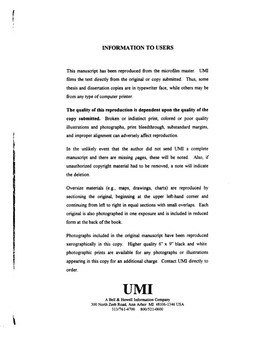| dc.contributor.advisor | Cruz, Joao R., | en_US |
| dc.contributor.author | He, Runsheng. | en_US |
| dc.date.accessioned | 2013-08-16T12:29:56Z | |
| dc.date.available | 2013-08-16T12:29:56Z | |
| dc.date.issued | 1997 | en_US |
| dc.identifier.uri | https://hdl.handle.net/11244/5585 | |
| dc.description.abstract | As an application, a modified EEPR4 (MEEPR4) channel with a 3-candidate LVA is shown to exhibit a 2 dB LVA gain. In addition, an error detection code is designed to increase the minimum distance by more than 2 dB with a high code rate. The CSGT generated RS trellis for the MMEPR4 channel has half the number of states. The performances of both the VA and the LVA on the RS MEEPR4 trellis have negligible loss. Lastly, the Fettweis branch metric shifting method is used with the CSGT to further reduce the complexity of the MEEPR4ML system. | en_US |
| dc.description.abstract | This work presents a high performance coding system and a novel reduced-complexity implementation technique to improve the performance of read channel chips in data storage systems. In particular, the coding system combines the list Viterbi algorithm (LVA) and a high rate error detection code. The novel reduced-state (RS) technique called complement states grouping technique (CSGT) reduces the implementation complexity of both the VA and the LVA with a negligible performance loss. | en_US |
| dc.description.abstract | First, we develop a reduced-state technique that generates an RS trellis by grouping all pairs of complement states whose state-distance satisfies a predetermined criterion. While the traditional RS techniques often cause unacceptable performance loss for partial response channels with binary inputs, this technique reduces the number of states by a factor of about two with a negligible loss for such channels. Second, a coding system combining an LVA with an error detection code is proposed for magnetic recording channels. The error detection code can provide a substantial coding gain with a high code rate. The LVA is used to provide a candidate list to achieve the coding gain in a suboptimal way. Third, we develop a method to estimate the performance of the LVA; the method takes into account factors such as noise correlation and multiplicity of error events. Fourth, it is shown that the LVA can be realized using a pipelined implementation and the computation complexity increases only linearly with the number of LVA candidates. | en_US |
| dc.format.extent | xi, 81 leaves : | en_US |
| dc.subject | Magnetic recorders and recording. | en_US |
| dc.subject | Error-correcting codes (Information theory) | en_US |
| dc.subject | Engineering, Electronics and Electrical. | en_US |
| dc.subject | Information storage and retrieval systems. | en_US |
| dc.title | Channel coding and reduced-complexity detection for magnetic recording. | en_US |
| dc.type | Thesis | en_US |
| dc.thesis.degree | Ph.D. | en_US |
| dc.thesis.degreeDiscipline | School of Electrical and Computer Engineering | en_US |
| dc.note | Source: Dissertation Abstracts International, Volume: 58-12, Section: B, page: 6727. | en_US |
| dc.note | Adviser: Joao R. Cruz. | en_US |
| ou.identifier | (UMI)AAI9817717 | en_US |
| ou.group | College of Engineering::School of Electrical and Computer Engineering | |
